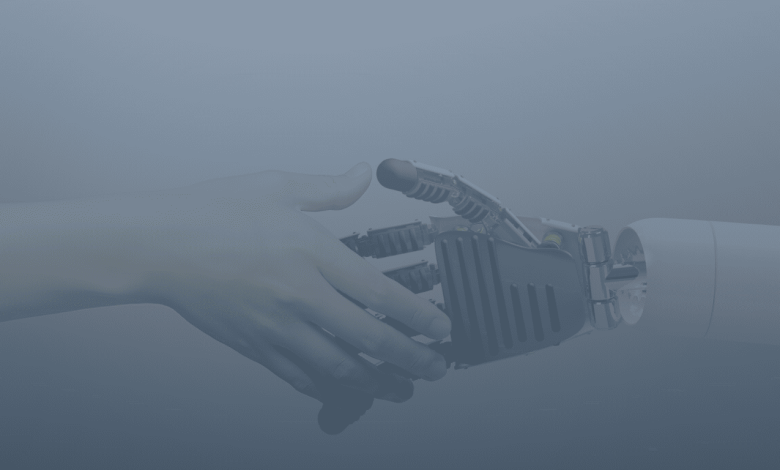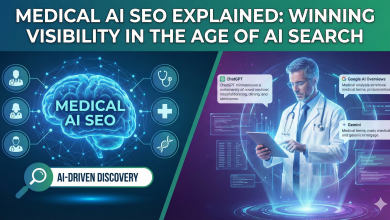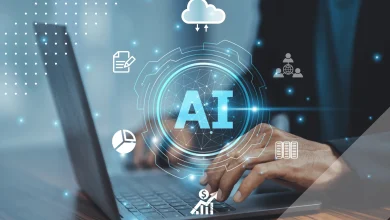
In recent years, generative AI has proven to be more than just hype, reaching a market value of $66.89 billion in 2025. This technology is reshaping both internal organizations’ processes and new software development across the industries, including HR. However, along with the excitement about the possibilities of artificial intelligence in human resources management, some experts are sounding the alarm that we should not forget about the risks.
In this article, I’ll share my observations from working in HR software development and market insights on how generative AI is transforming HRTech, and whether that change is ultimately for better or worse.
How AI is Reshaping HR Roles
The adoption of generative AI is changing the daily work of HR professionals in fundamental ways. According to Mercer’s research, 58% of employers planned to use generative AI in HR by mid-2024, and while 76% believed it would boost efficiency, the real value goes beyond cost savings and completely changes the role of HR specialists.
Turning HR Managers into Business Partners
Various studies prove that implementing Generative AI can significantly reduce the time HR managers spend on routine tasks. For example, chatbots can handle some employee inquiries, cutting this work from 5% to just 1% of total hours.
Modern tools can also automate task assignment and resource allocation for projects. For example, HR platforms like Workday use AI to match employees to internal projects based on their skills and availability.
In this scenario, HR managers can focus on what they were hired to do: act as strategic partners to senior leadership, connecting business needs to the HR portfolio. This requires a paradigm shift from both C-level and HR specialists themselves, because high-quality automation using AI is possible only when you have a clear HR strategy and understand what can be automated and what should remain in the hands of HR managers.
Top 3 Use Cases of Generative AI in HRTech
Beyond transforming roles, generative AI is solving specific, practical problems in HR departments. We’ll skip simple tasks as automated job descriptions or employee support, and jump to use cases that can provide the most value for businesses, but at the same time require more strategic adoption.
Resume Screening and Candidate Matching
According to SHRM Labs, organizations using AI for hiring report a 30% reduction in cost-per-hire by automating repetitive tasks. AI algorithms can analyze large volumes of CVs and cover letters, identify patterns, and recommend the most suitable profiles for each position. The technology can detect specific skills, previous experience, and qualities that match job requirements.
Big market players like Workday and Oracle HCM Cloud already implement these features, as innovative HRTech startups step on their toes.
Notably, this technology can work both ways, benefiting both HR managers and job seekers. For example, AI Ignition is a young startup that has developed a smart AI-powered resume builder. It helps users create ATS-friendly resumes and cover letters, increasing the chances of faster hiring for both companies and candidates.
Creating Customized Training Plans
No secret that retaining employees is as important as hiring. In large companies, creating training plans is divided among recruiting, employee relations, performance management, and L&D. However, small companies don’t have such resources and might only spend a few hours per week or month creating and updating such plans.
Generative AI is changing this. A 2023 LinkedIn report found that companies using AI-assisted culture fit tools reduced first-year turnover by up to 15–20%.
The technology can be used to analyze employee performance, strengths, weaknesses, and areas of interest to generate personalized training plans and track employee satisfaction. In addition to the qualitative benefits of retaining specialists, it also provides financial benefits. According to the SuperAGI’s research, AI-powered training solutions can help companies reduce their training costs by up to 50%.
Individualizing the Employee Experience
More than half of a total rewards leader’s workload could be affected by AI and automation. AI chatbots can handle two-thirds of employee support work while still escalating complex concerns to human experts. The technology can completely take over benefits program administration, including market analyses, salary surveys, and compensation benchmarking.
As a result, AI can help individualize the rewards proposition and adjust reward and benefit levers in ways that motivate and retain them more effectively.
However, as noted above, implementing these scenarios effectively requires more than just paying for AI tools. This requires strategic vision and realistic expectations. Despite its potential, AI is not quite there to fully unlock its potential in practice. Many HR AI projects fail because organizations chase overhyped, overly ambitious visions instead of starting with realistic and clearly defined use cases that deliver measurable value.
Managing Risks of Generative AI in HR
While AI use cases look promising, we can’t ignore the concerns surrounding AI in HRTech. Mostly, these risks are related to technology itself. But in some cases, these experiences are caused by regulatory, cultural, and structural factors of individual regions.
According to statistics, in the United States, employers are nearly split down the middle on AI adoption. Compare this to Europe, where Littler’s European Employer Survey Report revealed that 72% of companies are using AI in at least one HR function.
Let’s discuss the key risks that implementing generative AI in HRTech can pose, and ways to mitigate them.
Data Privacy and Security Concerns
When it comes to using AI for HR, most organizations are concerned about complying with data protection and information security laws. This absolutely makes sense. While the development of clear rules for AI is still ongoing, no one can guarantee that solutions implemented today will not cease to meet regulatory requirements in six months.
Moreover, HR systems often analyze sensitive employee data, and breaches or improper use could lead to legal penalties.
To mitigate that, organizations need to encrypt sensitive data, implement strict access controls, and anonymize datasets when possible. Also, it’s crucial to track changes in regulations and react proactively.
The Bias Problem
While AI can reduce human bias in recruitment, it can also perpetuate existing biases if not properly managed. Algorithms trained on historical data may reflect past discrimination patterns. This raises serious diversity, equity, and inclusion concerns that organizations need to address head-on.
The solution is to perform bias audits and combine AI insights with human judgment. Although AI is great at processing and automation, it cannot replace an HR specialist because it lacks contextual understanding.
Internal policies governing the safe usage of AI can help protect against data privacy issues, discrimination, and reputational damage from AI errors.
Implementation Challenges
Finally, adopting Generative AI is not as simple as it may seem. There are many pre-trained solutions businesses can use, but they still need AI expertise to integrate these tools effectively into existing HR workflows.
For new product development, the situation can be even more complicated, as most operate on a SaaS model. This means that the solution must be flexible enough to meet the needs of a large number of different users. With a high percentage of legacy systems on the market and the integration issues they cause, this can be a real challenge.
Moreover, many AI models are “black boxes” that produce recommendations without clear reasoning. This can make HR decisions difficult to justify and audit, especially in regulated environments. That’s why implementing AI, organizations must think about explainability. This may include keeping detailed logs of AI-driven recommendations and training HR staff to interpret AI insights critically rather than taking them at face value.
What the Future Holds
A Cognizant and Oxford Economics report found that approximately 52% of all jobs are expected to change significantly due to the future integration of generative AI within the next decade. However, as we see, AI tends to impact tasks, not entire jobs.
The future of HR isn’t about replacing people with machines. It’s about finding the optimal blend where each complements the other’s skills. AI excels at finding information, fielding questions in real time, making sense of data, and creating text. Humans remain essential for addressing performance issues, mental health concerns, interpersonal struggles, and situations requiring empathy and nuanced judgment.
To keep up with this growing trend, organizations need to start understanding how their HR teams operate today and what tasks can be automated with AI. This will allow them to build more efficient business systems that can handle competition and market changes.
At the same time, we all need to have a realistic vision of AI, understand the limitations of the technology, and respond to the risks associated with it.



